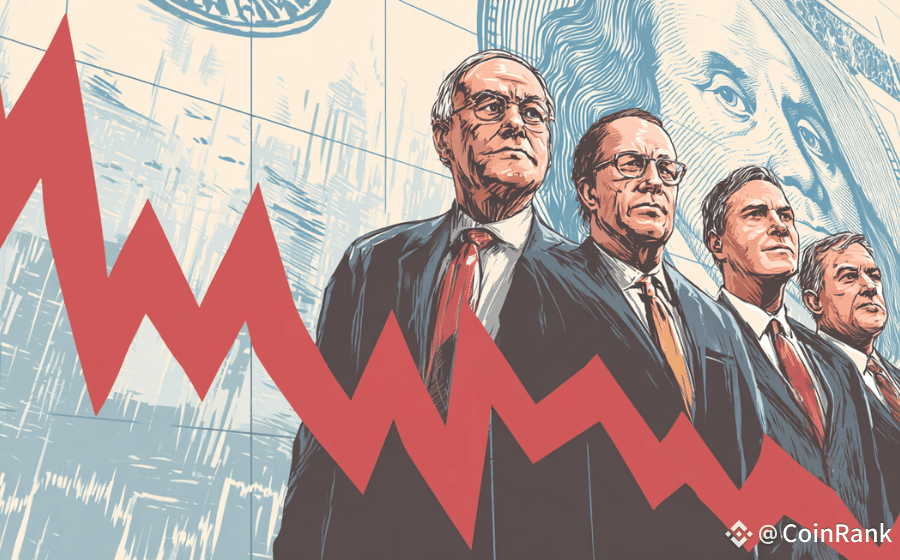July PPI rose 0.9%, sparking fears inflation may stall the Fed’s rate cut plans, lifting bond yields and tightening global liquidity.
Higher yields weigh on stocks and crypto, with Bitcoin and altcoins facing short-term downside amid reduced speculative inflows.
Persistent inflation could bolster Bitcoin’s long-term hedge appeal, even as high rates pressure liquidity-sensitive DeFi and risk assets.
U.S. PPI jumps 0.9% in July, hitting a 3-year high and shaking Fed rate cut bets. Higher yields pressure equities and crypto, with Bitcoin, altcoins, and DeFi facing renewed volatility.

The latest U.S. Producer Price Index (PPI) reading shocked markets, rising 0.9% month-on-month in July — the fastest pace in three years and well above economists’ expectations. The data reignited inflation concerns, sent Treasury yields higher, and weighed heavily on U.S. equities. Investors, who had priced in a series of interest rate cuts later this year, are now reassessing the timing and scale of potential Federal Reserve easing.
WHAT IS PPI AND WHY IT MATTERS
The Producer Price Index measures the average change in prices received by domestic producers for goods and services at the wholesale or production level. Unlike the Consumer Price Index (CPI), which captures end-user retail prices, PPI reflects costs earlier in the supply chain.
A higher-than-expected PPI suggests that production costs are rising more rapidly than anticipated. Businesses facing higher input costs often pass them on to consumers, meaning a spike in PPI can foreshadow future CPI increases. Because of this lead-lag relationship, PPI is considered an important early warning signal for inflationary pressures.
CURRENT INFLATION CONTEXT
As of July 2025, U.S. CPI inflation stands at approximately 2.9% year-on-year, with core CPI — excluding volatile food and energy prices — at 3.2%. Both remain above the Federal Reserve’s long-term 2% target. The latest PPI jump implies that progress toward the Fed’s inflation goal may stall or even reverse, complicating the policy outlook.
HOW PPI MPACTS FED RATE CUT EXPECTATIONS
The Fed’s dual mandate is to maintain price stability and maximize employment. Persistent inflationary pressures directly conflict with the price stability objective, making policymakers hesitant to loosen monetary policy prematurely.
If PPI rises sharply, it signals upstream cost pressures that could flow through to consumer prices. This reduces the likelihood of imminent rate cuts, as lowering rates would make borrowing cheaper, stimulate demand, and risk pushing inflation higher — especially when the economy is already running at high capacity utilization and low unemployment.
MARKET REACTION: BONDS, EQUITIES, AND YIELDS
Following the PPI release, short-term Treasury yields climbed as traders priced out near-term rate cuts. Higher yields translate into a higher discount rate for valuing future cash flows, which pressures equity valuations.
It’s not simply a case of money “moving from stocks to bonds.” Rising risk-free rates raise the required return for holding risk assets, making fixed-income securities more attractive and prompting a repricing of equities.
IMPACT ON THE CRYPTOCURRENCY MARKET
The delayed Fed rate cut narrative is equally important for digital assets. Higher interest rates increase the opportunity cost of holding non-yielding assets like Bitcoin and other cryptocurrencies. This often leads to short-term downside pressure as speculative capital rotates into safer, yield-bearing instruments.
Moreover, higher Treasury yields and a stronger U.S. dollar can tighten global liquidity, reducing the flow of funds into risk-on markets — including crypto. Altcoins and DeFi tokens, which rely heavily on liquidity inflows, may face amplified volatility.
However, from a long-term macro perspective, persistent inflation without aggressive Fed easing could renew interest in Bitcoin’s “digital gold” narrative, especially among institutional investors seeking a hedge against fiat debasement. This dynamic could set up a divergence where near-term pressure gives way to medium-term accumulation opportunities, particularly if macroeconomic uncertainty deepens.
ECONOMIC IMPLICATIONS OF DELAYED RATE CUTS
If the Fed delays rate cuts, borrowing costs for businesses and households stay elevated for longer. This can suppress corporate investment and big-ticket consumer spending, slowing economic activity.
However, the slowdown may be more gradual than markets had expected before the PPI release. Instead of a swift cooling that paves the way for early rate cuts, the economy could remain in a prolonged high-rate environment, with demand and investment constrained but not collapsing.
OUTLOOK
The July PPI surprise underscores the challenge of declaring victory over inflation. For investors — both in traditional finance and crypto — it serves as a reminder that the Fed’s path to rate cuts is contingent on sustained disinflation across both consumer and producer price metrics. Until PPI and CPI consistently trend toward target, the “higher for longer” rate narrative is likely to dominate — keeping markets on edge, liquidity tight, and volatility elevated across asset classes.
〈U.S. PPI SURGES TO 3-YEAR HIGH, FED RATE CUT EXPECTATIONS FALTER〉這篇文章最早發佈於《CoinRank》。



